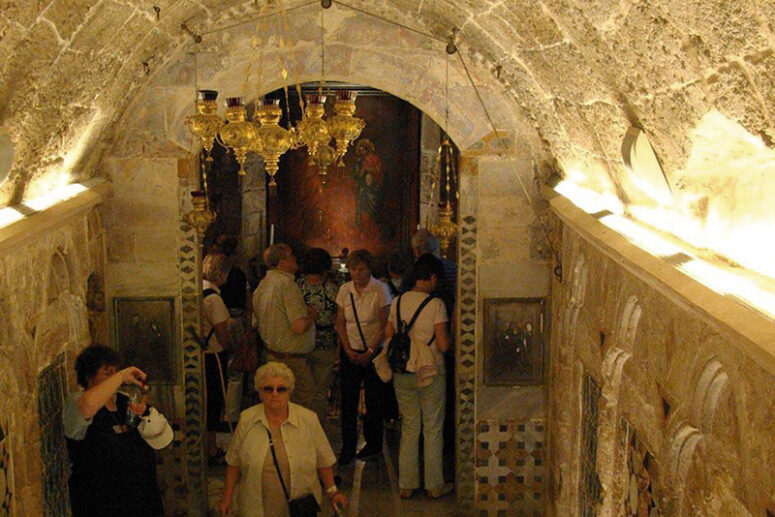
From a young age, the Virgin Mary lived in Nazareth. Her annunciation took place in this city. Here, she gave birth to Jesus. But where was the home of the Virgin Mary? Has it survived to our time?
Why is not there a trace of Mary’s dwelling in the Basilica, just the cave?
Until recently, Nazareth was believed to be a small town with a population of 100 to 500 people. Yet a recent excavation showed that it was not true. The population of Nazareth numbered almost a thousand, making it a fairly large city by the standards of biblical times. But the city was squeezed into a very limited space. In the modern maps, it is an area between the Orthodox Church at the Spring and the Catholic Basilica of the Annunciation.
It is believed that the Basilica now stands where the Virgin Mary lived before her marriage, and maybe even after it. However, visitors to the Basilica will find no trace of a home inside. At the basement level of the modern church, visitors will find themselves in front of a cave.
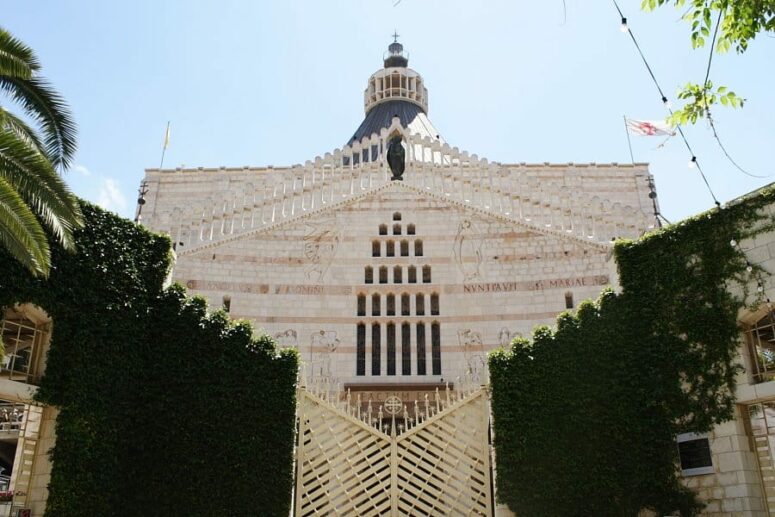
According to tradition, the Annunciation of the Virgin Mary happened here. The Archangel Gabriel came before the virgin and said to her: “You have found favour with God. will conceive and give birth to a son, and you are to call him Jesus.” (Luke 1:26–38). Several other alternative locations of the Annunciation of Mary have also been proposed. According to one legend, Mary met the Archangel at a well where she came for water. The Greek Orthodox Church of the Annunciation stands there at present, built at the location of the ancient church of the Archangel Gabriel completed during the reign of Empress Elena.
The entrance to the cave can now be observed worldwide. Franciscan monks have put a camera in front of it, and one can now observe the view from the cave on the Internet in real-time.
The cave formed naturally, but several generations of people have expanded it. According to tradition, the white round-shaped image of the cross stands at the spot where Mary was standing when Christ became incarnate in Her womb. Visitors nowadays are admitted inside only on rare occasions – the cave is at risk of collapse. Previously, anyone was allowed to enter inside and even pick a piece of rock from the wall – which eventually made the construction dangerously fragile. The cave was large, comfortable, and plausibly suitable as a human dwelling. Does that mean, however, that Mary lived there?
Was the Cave of the Annunciation Mary’s dwelling?
Fourth-century Christians would have said yes. Egeria, a pilgrim to Nazareth in 374, was shown a large and beautiful cave where Mary was supposed to have lived.
Modern archaeologists disagree. People used to live in caves, but that was long before the events depicted in the Bible. In the times of Christ, this tradition was already a thing of the past – people were already living in mortar houses. Caves were used for burials, and also for housing travellers between cities. Caves near houses could be used for storage or cattle. The Bible confirms this: it tells us that Christ was born in a manger inside the cave.

If a cave was not used as a dwelling for Mary and her family, how did it serve them? We can make some intelligent guesses at this point. Could it be, for example, that it provided a storage facility, a manger for cattle, or even a weaving workshop? There was certainly enough space for a loom, and some icons of the Annunciation even depict her in front of one. But let us not jump to conclusions too quickly. If our guesses were true, there would have to be Mary’s dwelling somewhere nearby. But here is the interesting part.
Before building the Basilica, the Franciscans conducted a large-scale excavation, uncovering the old building layer after layer like we would open up the Matryoshka dolls. They did not find one, but as many as four houses.
Whose houses were they?
Before the Basilica of the Annunciation, this was the location of an old Franciscan church that replaced another church built by the Crusaders who entered Nazareth in 1099. That church was built on the ruins of a fifth-century Byzantine temple, as we know from this written testimony left by a pilgrim from Piacenza, who visited in 570. “The Basilica is now the dwelling of Saint Mary, and her vestments work frequent miracles. The women in this city are the most beautiful in this land. They say that their beauty is a gift from the Virgin Mary to whom they are related,” wrote the pilgrim.
The Byzantine temple had three naves, and the remnants of the central nave have survived to this day. Adjacent to the temple from the West was a large courtyard where multiple pilgrims to the place presumably found shelter. From the Northern wall, visitors could access the Holy Cave (as it was named then), but the entrance to it was near the church, not inside it.
The temple stood until the eighth century. Then it fell into disrepair, presumably in a series of invasions, first from Persians and then from Arabs. The building fell apart, but the cave remained. The surviving monks continued to congregate in it under Muslim rule.
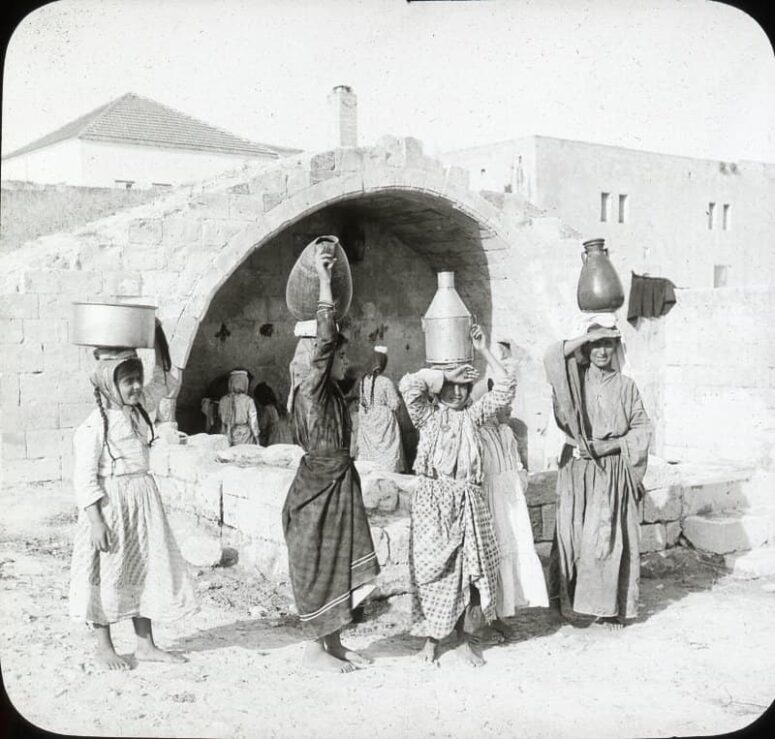
But even the Byzantine building was not built in an empty spot. Its predecessor, the first structure in this area, was built in the first centuries after the birth of Christ before Christianity became the official religion of the Roman Empire. Archaeologists have discovered the remains of the ancient walls with early Christian inscriptions in Greek and Aramaic, and with fragments of a mosaic on the floor. Perhaps the most telling inscription was found at the foot of one of the columns. It was the glorification of the Virgin Mary made by a pilgrim in the first century after Christ. These inscriptions were rare in those times. Presumably, it was not made by accident, but because of some connection with the Holy Virgin. The column is open for inspection at the nearby eschatological museum. As with the Byzantine temple, this early structure stood separately from the entrance to the cave.
So what was in this area during the lifetime of the Holy Virgin?
The churches described above were not built until after the Resurrection of Christ. What preceded them? What stood here during the lifetime of the Virgin Mary.
The cave was probably there but was there also a house. Maybe, but not necessarily. If there had been one, the pilgrims would probably have mentioned it.
Let us also recall that it was on the outskirts of Nazareth, where archaeologists still discover ancient burial sites. They date them differently – some to the years of the Crusaders, others to biblical times. Yet dating is such a difficult process that even archaeologists may yield to temptation and interpret uncertainties through the lens of their biases.
Yet, of the burials were indeed from the era of Christ, the absence of a human dwelling is understandable: construction of residential premises was prohibited by Jewish law.
So what was Mary doing here? Right now, the only certainty is that she was somehow connected to this cave. Perhaps she was visiting the graves of her departed kin? That explains why the first Christians chose the cave for their gatherings. In the years of persecution, they saw this place – connected with the life of the Virgin Mary – as safe for congregating, much like the Christians of Rome did when they communed in the Roman catacombs.
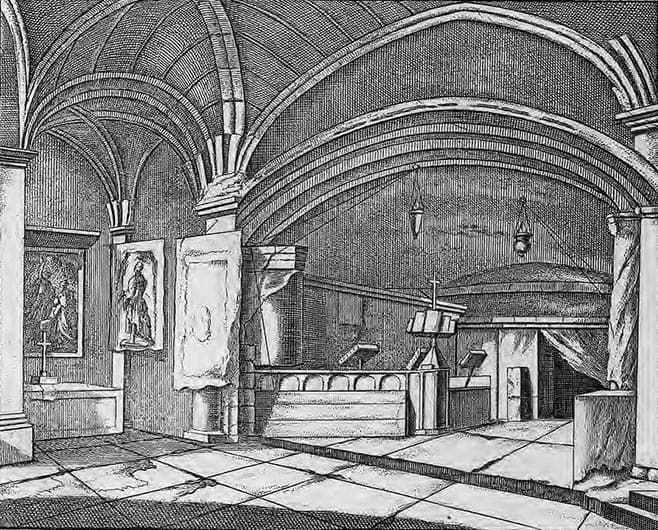
But these are not proven facts, but only conjectures. To keep looking, we need a critical mind and a healthy aversion to sensations. Recently, there have been a lot. The number of discoveries of the houses of the Holy Family claimed in the last 2000 years is enough for a medium-sized village. Scientists do not know the exact location of the house sanctified by the presence of the Mother of God.
We know that in Galilee, new buildings succeeded older ones with a regularity. Byzantine temples were built at the locations of the early Christian churches. After Byzantine, the Crusaders continued to build churches, and other Catholics followed suit up until the 20th century. The excavations continue. Science reveals to us many new facts, but numerous mysteries remain. Yet one thing is certain: this whole area brings alive in us the memory of the great deed of the Most Holy Theotokos, and makes her humility and suffering real for us. It makes history alive to us.
Translated by The Catalogue of Good Deeds
Source: foma.ru

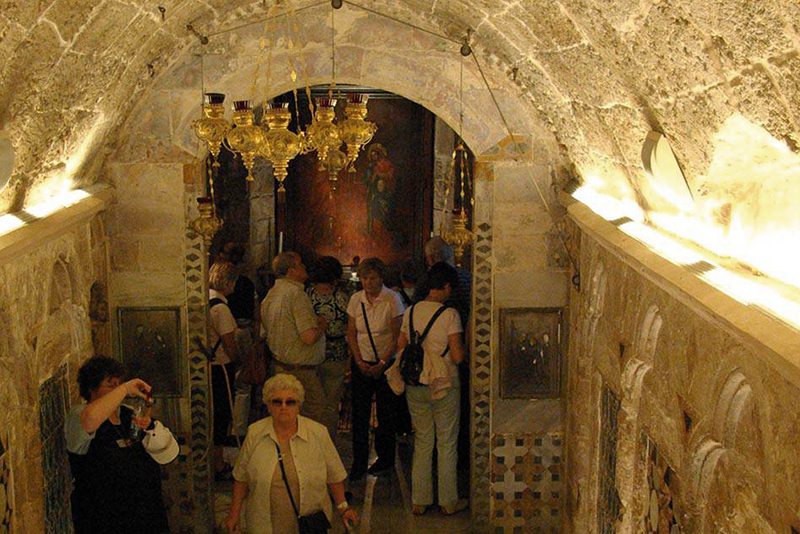
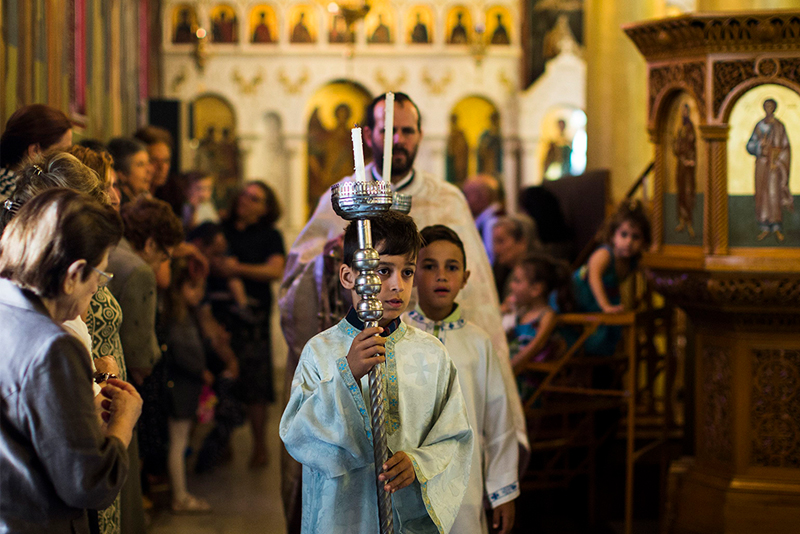


The Blessed Virgin lived in Nazareth. The Annunciation to her took place in Nazareth. But the whole world knows that her Son, the Christ was born in Bethlehem, not in Nazareth, as the caption implies.